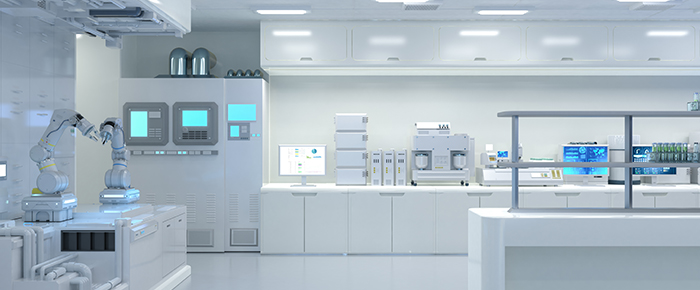
Quick decision-making is essential to starting a new research lab; you’ll need to ensure your space is properly stocked with equipment and staffed accordingly. You’ll also need to negotiate costs and other job details while ensuring you have room to grow, both as a scientist and leader. Here are several tips to help navigate the sometimes daunting process of starting and managing a life science research lab.
Assess space, equipment, and budget
Space is always a limited commodity in research, so when first assessing the space available for setting up your lab, bring a list of must-have equipment on hand when visiting the new area and try to determine footprints for each item to ensure that the space available is sufficient. These items should include incubators, tabletop centrifuges, water baths, refrigerators, freezers, consumables, glassware, and any additional setup space needed for specific experimental techniques. Budget is the main factor determining how many of these items make your list, which can often be limited depending on the size of your start-up grant(s). That’s why it’s always a good idea to keep up-to-date with the research of others in surrounding labs, as other PIs may be interested in sharing large equipment and collaborating on new projects, ultimately saving you from having to pay full price to buy additional expensive machinery. Another consideration when determining space is to ask the institution if they use a space formula, as space can be directly linked to funding, which can play a significant role if there is a brief gap in funding or if you acquire new funding.
Optimize workflows from the start
Though there may not be all that much lab work to do at the beginning, it pays to set the standard early for using the most efficient means possible. If the budget allows, it pays to invest in cloud-based digital technology, such as a laboratory information management system (LIMS) and/or electronic lab notebooks (ELN), that will make tracking and organizing your experimental workflows, SOPs, inventory, and analyses streamlined and mistake-free. These systems provide remote monitoring of nearly every facet of the lab, which is especially useful as the lab grows and the work habits of new students and associates begin to form. Using digital technologies early ensures consistency is implemented from the start and that others looking to join will then employ in their own work and pass on to others.
Keep a healthy line of communication
Maintaining communication with everyone, from other PIs in the department to students on social media, is critical for consistent growth. The lab should be a welcome venue for new students and post-docs, allowing them the freedom to express their interests and opinions in a team-oriented atmosphere. Even spending a bit of money on activities outside the lab, like social events and dinners, can help build a rapport between members, especially when a culture of open and honest communication is encouraged. Furthermore, it is recommended to venture in other labs and seek to collaborate wherever possible while creating and updating your own lab page on the institution’s website can work towards building your reputation among other scientists. Keeping an active social media account can also help here, especially when looking for new post-docs and students to recruit. It can also help share new publications, solicit feedback, and build a community of like-minded scientists that may eventually provide new opportunities later down the road.
LabTAG by GA International is a leading manufacturer of high-performance specialty labels and a supplier of identification solutions used in research and medical labs as well as healthcare institutions.
Reference:
-
Goldstein B, Avasthi P. A guide to setting up and managing a lab at a research-intensive institution. BMC Proc. 2021;15(Suppl 2):8.